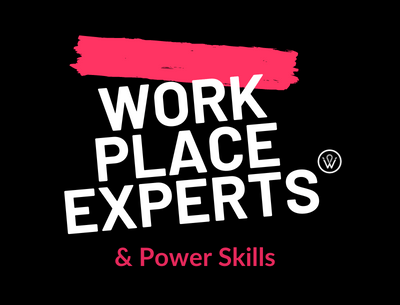

Investing in human connection as part of employee engagement is one of the assets an organization should eye.
My generation has seen computer-less workplaces and I am kind of proud of it. Now, try to imagine a bank office without computers! Can you tell how it worked? It is hard to imagine how it worked in the past but obviously, it did and it wasn’t a miracle. I think employee engagement wasn’t even a topic back then.
Technologies starting to take over
Calendars mark year 2017, we are talking about robots and Artificial Intelligence more than ever. My childhood sci-fi movies of virtual reality are already there. Although I am still waiting for my favorite invention, teleportation, to happen. Fast forward to our lives today, and the truth shocks us. A report published by Nielsen company shows that for American adult time spent in front of a screen is on average 65% of their awake time. This dramatic shift hugely changes how we communicate and engage with our circle of friends, families, and co-workers.
Along with the high-pace technology change, we are also becoming more conscious of our physical and mental well-being. We want the right work-life balance and we are actively looking for jobs that represent our personal values.
When you combine these two trends of tech-takeover and people seeking value and emotional validation, the question emerges for companies. How today’s companies should engage their employees while using the benefits of technology without losing the human connection?
Human Skills over robot-use
We cannot deny companies’ greatest asset is their people. It is discussed widely that the increase in robot use will take over our jobs. However, there will be new areas opening always where we will need human skills. Those are the human skills that need to keep up with the momentum of changes with technology.
After spending 10 years as a professional in global business-tech positions and having spent 40% of that time on conference calls, I can summarize my findings in 5 points.
1. Sparks happen when people talk about daily things and mingle
Did you hear the story that Steve Jobs insisted on having only two bathrooms built in the center space for Pixar? So the designer and engineer groups had to come there and talk to each other. In today’s environment, we have regular meetings, conference calls, or even video calls to discuss important tasks with our colleagues. What we shouldn’t forget is that those casual coffee breaks and lunches with co-workers can be more eye-opening than any forced regular meetings. Companies/managers should be simply happy when their employees take the time to walk over to the coffee area.
2. 5 min face-to-face is more productive than 10 emails back and forth
We can accept the fact that not only introverts but we all find comfort in just typing emails. Even though the person we need is two desks away or downstairs. Technology gives us this tendency for isolation. Yes, approaching a colleague means a short physical movement. Of course, it depends on how big your building is. Certainly, it will provide a boost to blood circulation not to mention building better trust and understanding for employees. That is why companies should design workspaces that move people and encourage access to one another. I agree with Harvard business review that states chance encounters are nice but intended interactions between knowledge workers that improve performance are even better.
3. Positive social impact is key to the loyalty
It is proven that employees feel more connected and perform better when their values are represented by the company. Companies run Corporate Social Responsibility programs, however, with ongoing budget cuts in several industries, the money that goes into the CSR pot is also shrinking. Besides, not every business can lead a social agenda. However, that shouldn’t stop them letting their employees be part of something that gives back to the world. No matter if it is related to the business or not. It can be giving the employee some time off to be part of a charity project or using team off-sites for helping an NGO with a physical project like cleaning a forest/beach. It will get the employees out of routine business and enhance their feeling of gratefulness. To give an example, snacks giant Mondelez is running Cocoa Life program for the last few years to support Cocoa communities. Cocoa Life aims to provide sustainable future, especially for kids and women. Mondelez also dedicates a month in the year for individual/team volunteering. Perfect human connected, employee engagement example.
4. Workshops provide limitless team techniques
Have a problem with the team? That’s normal. We are not all the same and we carry value in our differences. Still, this doesn’t mean that it will be an easy road to success. Some teams will need help in communication, some will need in trust and some will need operational excellence. It is always recommended to seek professional help. An objective eye and an expert who worked with similar groups before. While there are many different classroom-type of workshops and exercises to work on team collaboration, there are also very creative approaches like building a bicycle or creating an art piece together. My team and I recently joined a Rhythm session with drums where one of the great learnings was to “listen to each other” to be able to play a piece together.
5. New Experiences create unity
Teams learning together off-work topics and creating employee engagement are always good fun, especially if we dedicate the work hours for that. Fun is bi-product of what actually is getting one another know better while cooking at a course together, learning a new culture or solving a puzzle together or winning a dragon boat race TOGETHER. You realize the keyword here is “together”, where colleagues experience things for the first time and stamp those moments as memories in their lives. It will fuel their common work, they will be happy to jump in and help each other just as friends do. A team’s common topic should never be only their work, especially if we are spending 2/3rd of our days “together”.
All in all, we are human and we should benefit from our personal touches, quirks, connections, and sparks by sharing and multiplying those without being isolated by the technology advances. We need to invest time, thinking, and also money on how to enhance human connection as well as employee engagement in everything we do.
Please let me know your thoughts below and share if you think it was useful.
Bilge Apak, is the co-founder of WeWent.com, marketing tech and e-commerce expert, team building enthusiast and women rights advocate.




